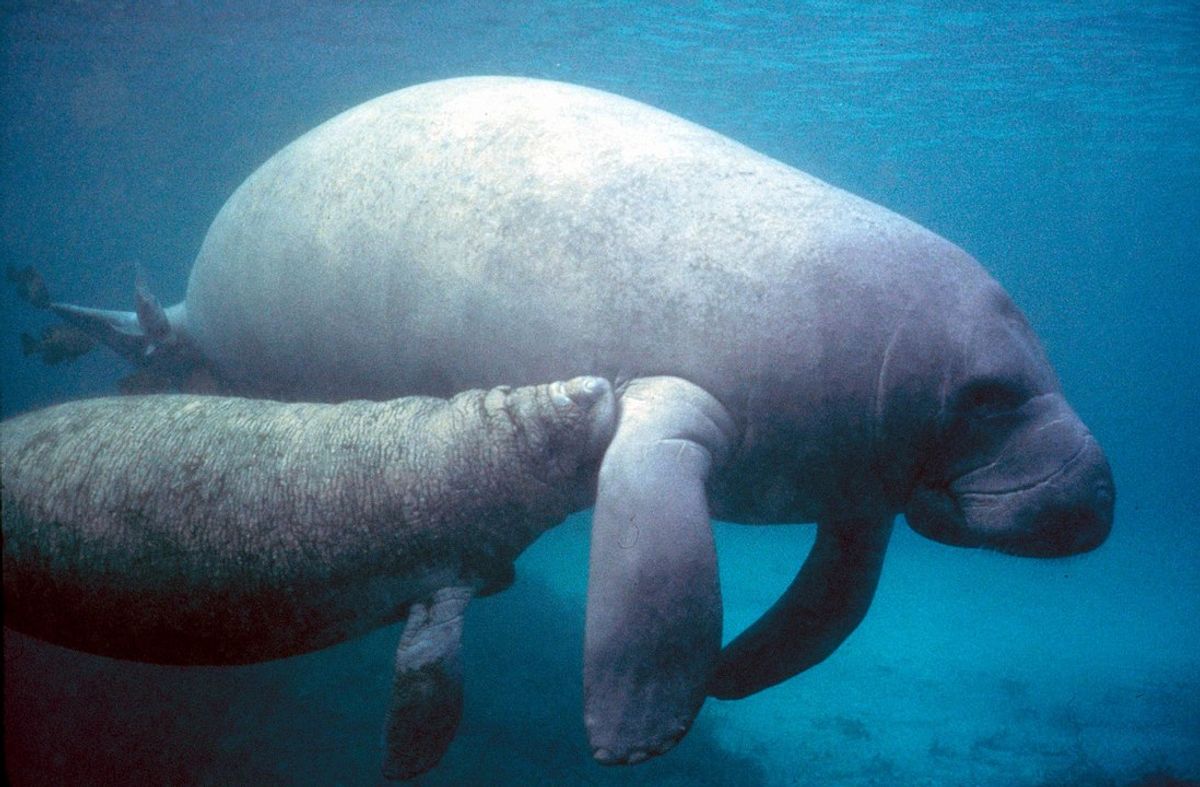In the first half of 2021, more of Florida’s manatees have died than in any other year in state history records, according to new estimates published by the Florida Fish and Wildlife Commission.
At least 841 manatees died in Florida waters between Jan. 1 and July 2, 2021, breaking a previous record of 830 manatee deaths in 2013 following a red tide outbreak. (By comparison, the five-year average has been 352 deaths per year.) Wildlife officials blame the mass mortality event on a large die-off of seagrass, manatees’ primary food source, along a large mangrove wetland area known as Indian River Lagoon.
"Unprecedented manatee mortality due to starvation was documented on the Atlantic coast this past winter and spring," wrote the Florida Fish and Wildlife Research Institute (FWRI). "Most deaths occurred during the colder months when manatees migrated to and through the Indian River Lagoon, where the majority of seagrass has died off."
Known colloquially as “sea cows,” Florida’s West Indian manatees head to the warmer waters of the Indian River Lagoon to forage. These large grazers can consume up to 9% of their body weight in a day in seagrass and other species of submerged aquatic plants, but for unknown reasons, this vital food source is declining rapidly.
“The long-term health effects of prolonged starvation in manatees that survived the Atlantic event to this point are not yet known,” wrote the FWC in its report. “FWC remains committed to monitor and investigate manatee health, respond to manatees in need of rescue, and implement science-based conservation measures that protect manatees and their habitat.”
It comes after wildlife officials declared an Unusual Mortality Event (UME) in March, which prompts a federal government collaboration between state and local entities to immediately investigate the cause of deaths, as was first reported by southeastern Florida’s digital newspaper TC Palm. And while a preliminary report indicated that a reduction in the seagrass was primarily responsible for the die-off, the FWC has not yet determined what is causing the seagrass die-off.
As temperatures warmed up in the later months of the year, manatees on the Atlantic coast dispersed to other habitats for foraging, lessening the number that died from starvation. In June, boat strikes once again became the leading cause of death: as of this writing, a total of 63 manatees had been killed by boats.

